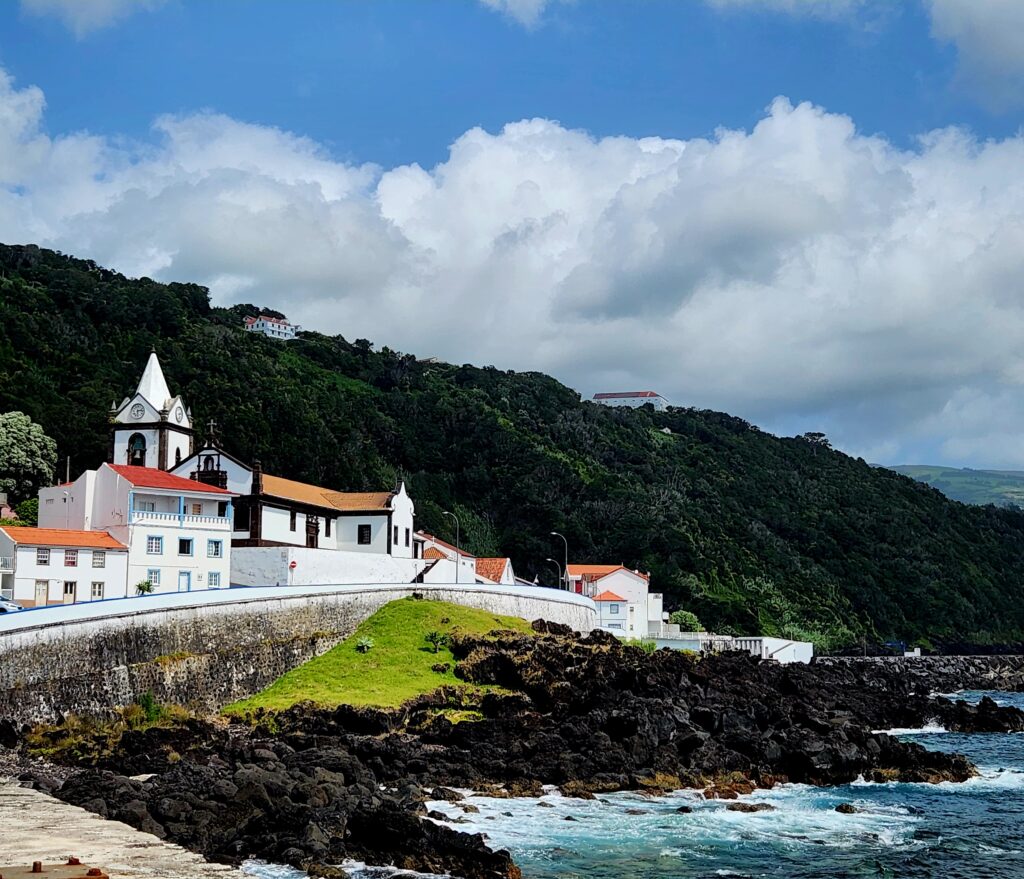
My First Visit to São Jorge Azores Island
The spectacular scenery of the oblong island that is São Jorge begins from the air. A long mountain range developed by a volcanic ridge forms the backbone of São Jorge. The island’s nickname is the sleeping dragon—how cool is that? Meanwhile, coastal cliffs plunge into the dazzling blue Atlantic; its “fajãs” (fa-has) are feet from lava flows or landslides that slide into the water, forming a ragged outline. This island has forty of these natural phenomena called fajãs. This is the amazing Azores.
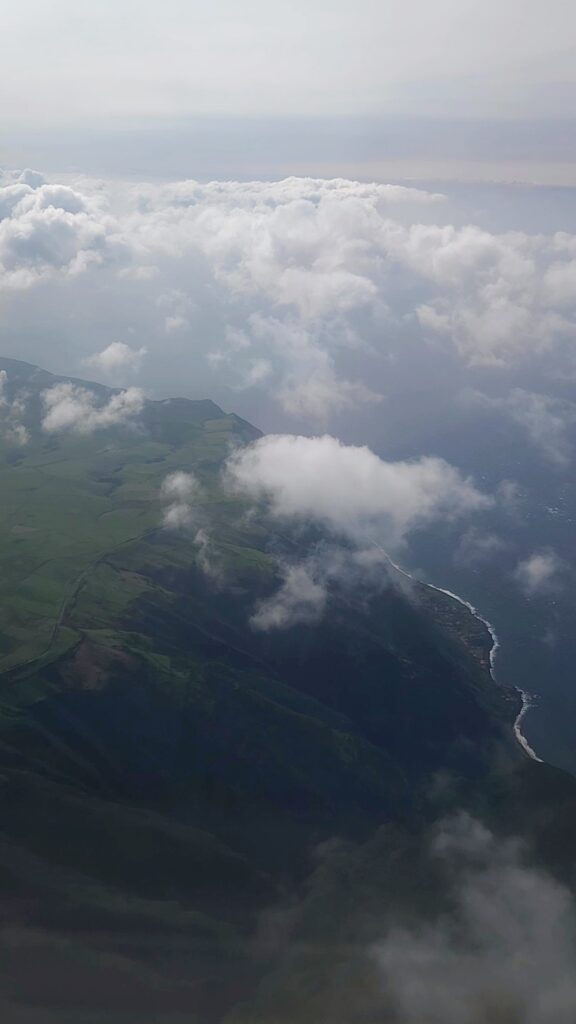
Table of Contents
Your First Visit to the Azores Island of São Jorge
Unfortunately, there are no international flights to São Jorge, only domestic. So, if you aren’t already on Terceira, or at least in the Azores, you’ll be changing planes for this last leg.
The ferry from Terceira takes about four hours, and the flight is thirty minutes. Since the round trip by sea to visit São Jorge requires eight hours, the flight saves you a full day—time better spent exploring.
What Island in Portugal is like Hawaii?
Many people consider the Azores the Hawaii of Europe. And who could blame them? The Azores are a group of stunning islands with many of the same charms as Hawaii. And for most Europeans (and even those of us from the East Coast of the United States), the Azores are a much shorter flight!
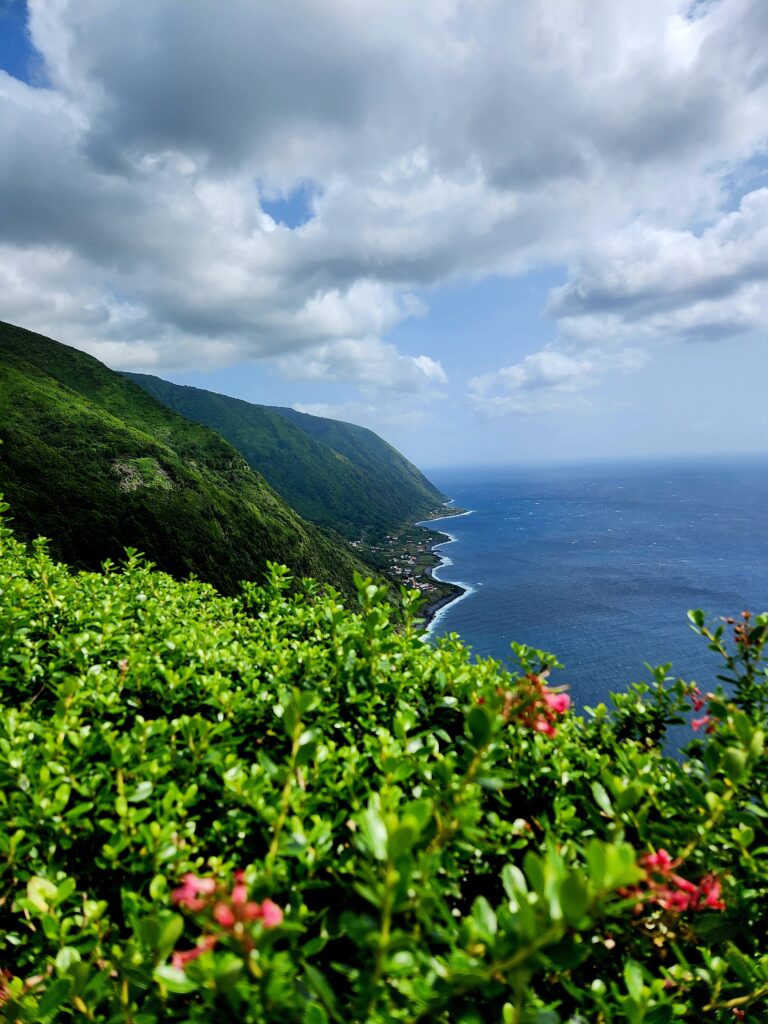
A Picture of the Islands
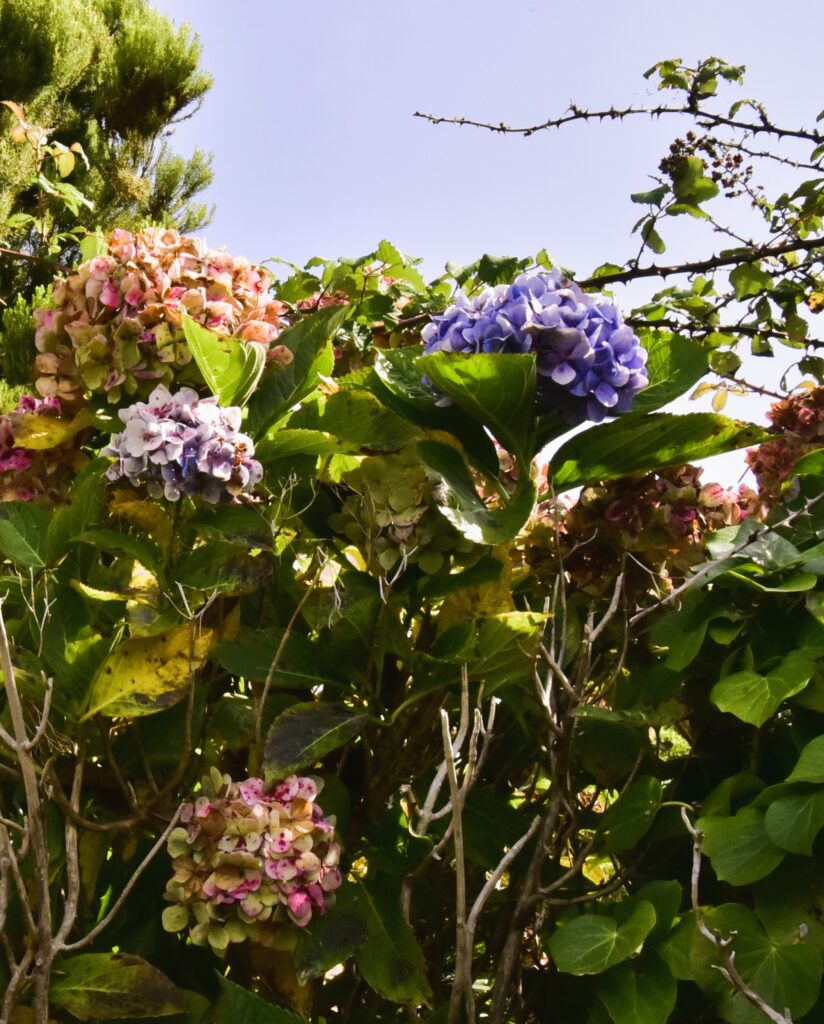
The Azores are a small group of volcanic islands in the middle of the Atlantic Ocean, 1,000 miles from mainland Portugal and about the same distance from the United States. The larger of these Portuguese Islands have direct flights from European and North American cities. Check with SATA/Azores Airlines for booking information.
On the grey island of São Jorge, iconic Azorean Blue Hydrangeas grow alongside roads and climb mountainous cliffs. Even in September, the tropical-like climate allowed for the lush vegetation, blooms, and natural beauty we enjoyed.
The Azores don’t have large wild animals or snakes, although watching where you step in the woods is a hard habit to break. The islands support native wildlife like rats, hedgehogs, ferrets, rabbits, and bats. And of those animals, only the bats are native to the island. Numerous ponds encourage migrating waterfowl to make a rest and refueling stop. Reindeer were napping in their enclosure at a zoo in a nature park, so I think São Jorge may be a vacation spot for a well-known North Pole resident.
Interestingly, until the Portuguese landed in the 1400s, the Azores were isolated from North America and Europe for millions of years. Because of this, the plants and trees here evolved separately from their foreign cousins, creating many unique specimens on these islands.
What is the main city on Sao Jorge?
The City of Velas is the historical center of São Jorge Island in the Azores. Velas is a quiet and picturesque town surrounded by stunning landscapes. In addition, when you look out to sea, you can see Mount Pico from wherever you are.
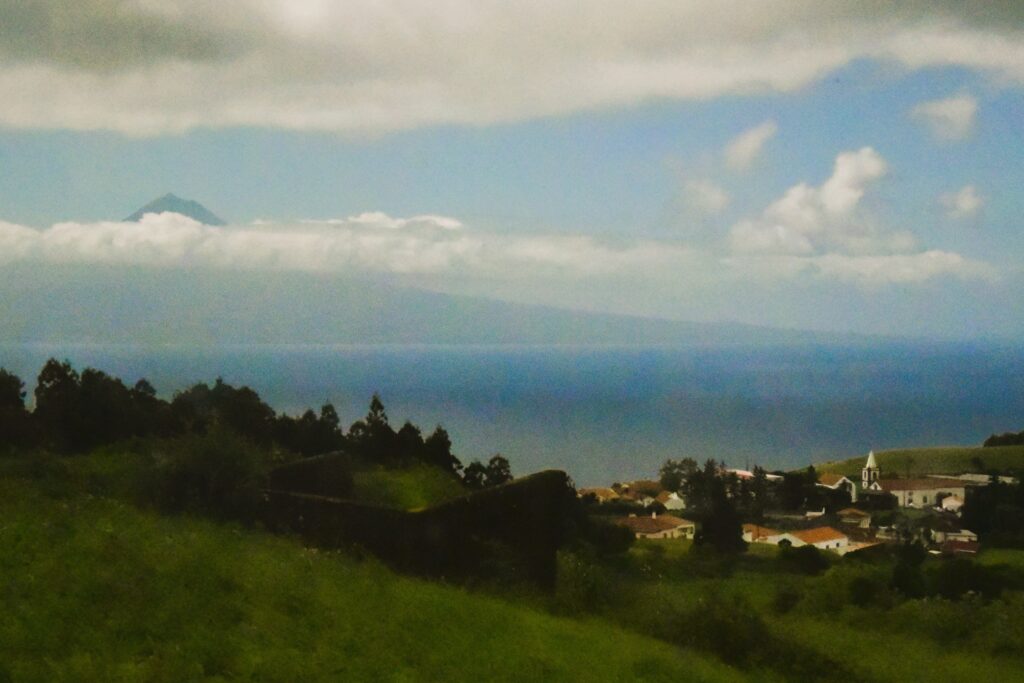
Velas, São Jorge
Botanical gardens don’t fill São Jorge, but beauty abounds on the island. And there is a more formal-style garden in downtown Velas, the Jardim da Republica (Garden of the Republic). The Garden has flowers and other plantings, parakeets on display with colorful individual birdhouses, and picnic tables under shade trees. A low wall topped with red iron fencing encloses the entire square.
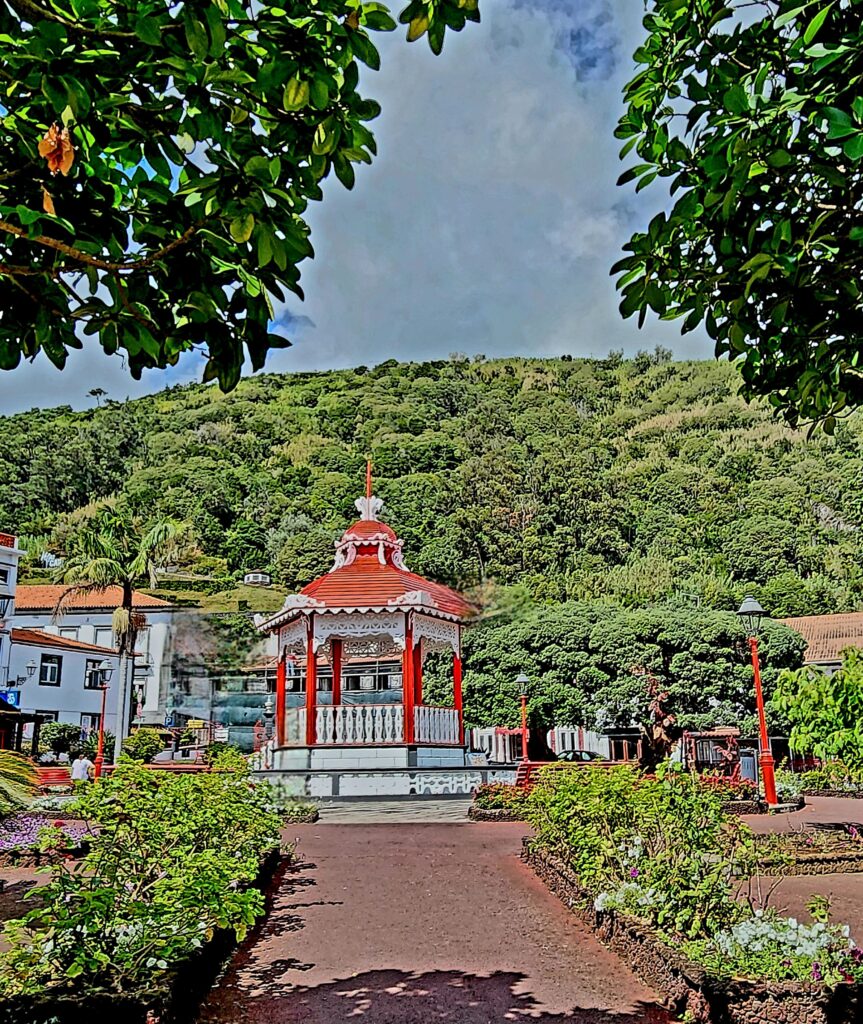
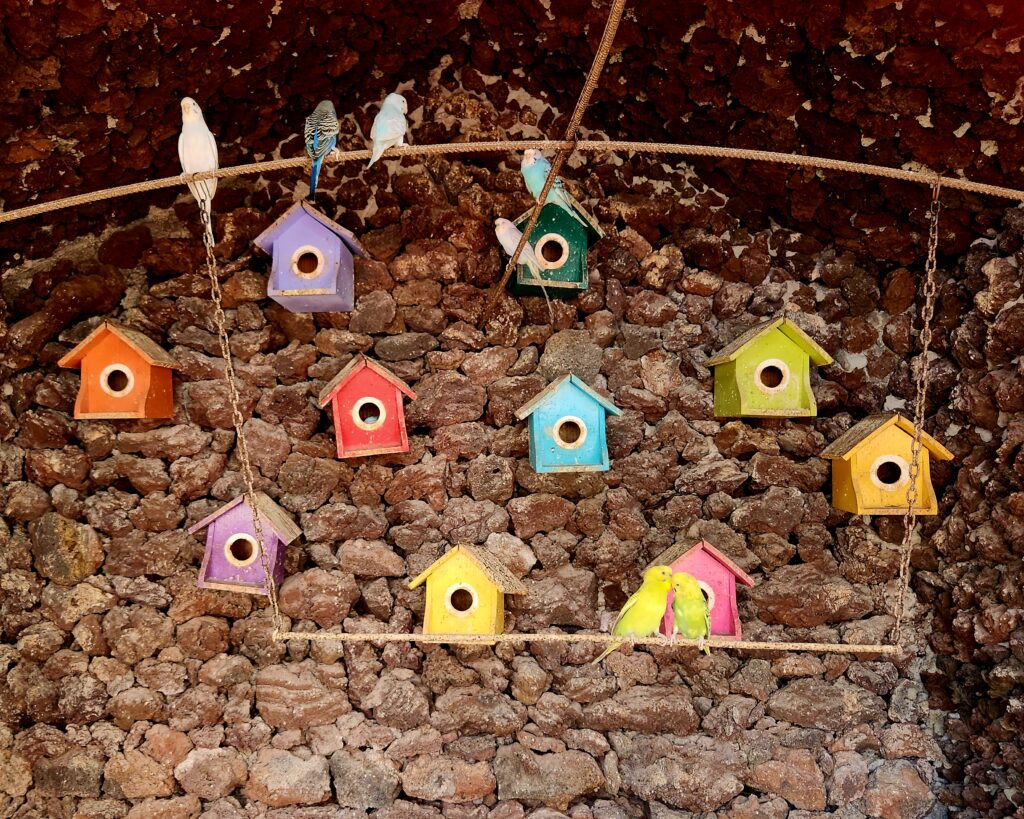
City Hall is located on the south side of the Garden. It is a restored baroque-style building with red bars around the windows that match the Garden’s red iron fencing.
The Garden, established in 1836, added a quaint bandstand in the center in 1898. Music is woven into Azorean lives, and many towns have formed fantastic philharmonic bands. In the Municipality of Velas alone, there are six such bands. The Art Deco Velense Philharmonic Society is on the side of the park, opposite City Hall.
Take a short walk down São Francisco Street, and you will come to the village’s main church, the Portuguese Catholic church Igreja Matriz de São Jorge. We spotted lovely centuries-old churches all over the islands. This church stands on the site of a primitive church mentioned in a will dated 1460. Construction on this building started in 1664.
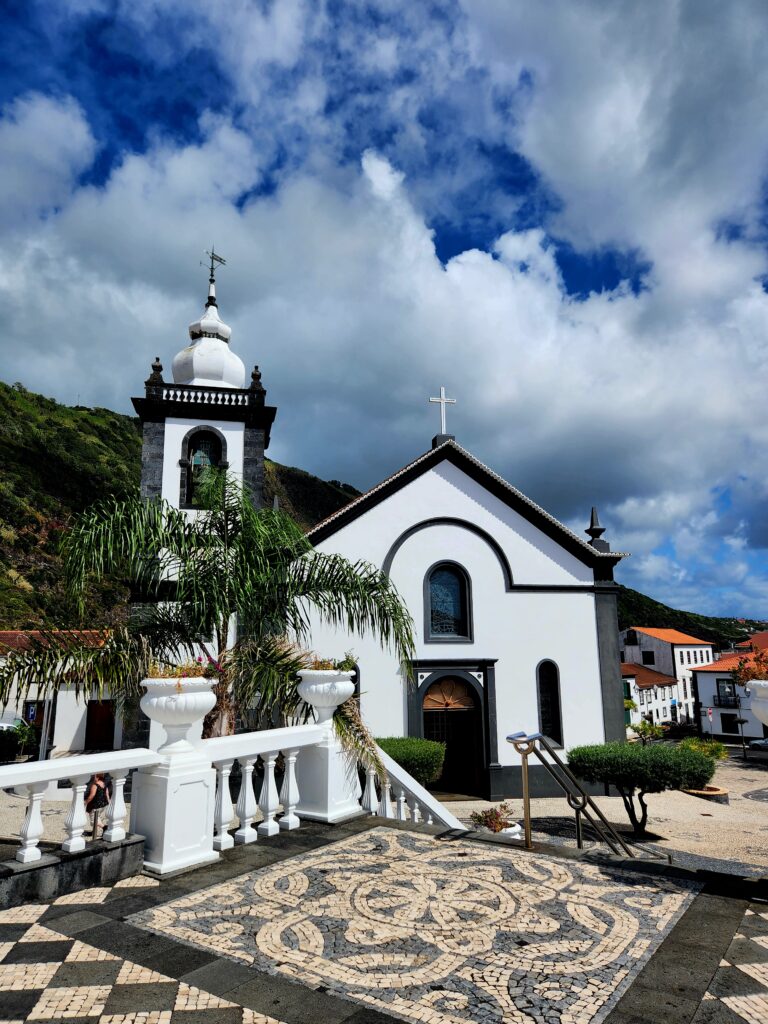
Also on this block is the only remaining building of the 1642 São Francisco Convent, a convent of the Franciscan Friars Order founded in Italy in 1209 by the order of São Francisco de Assis. The building is used today as part of the Velas Health Centre.
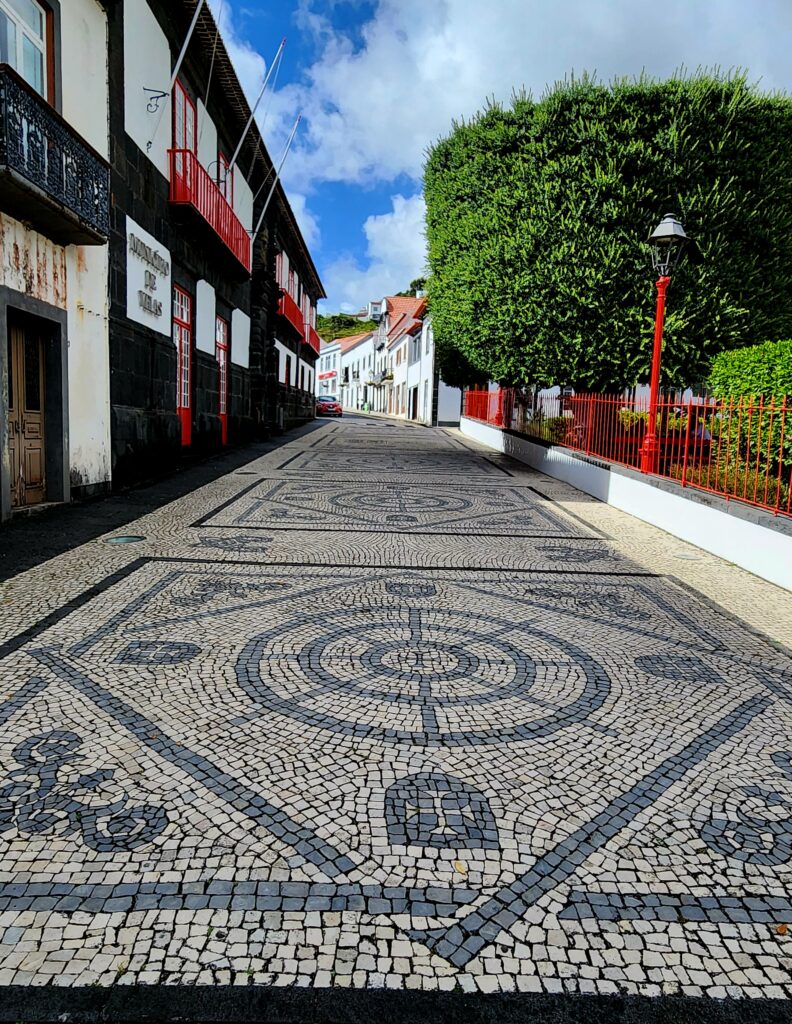
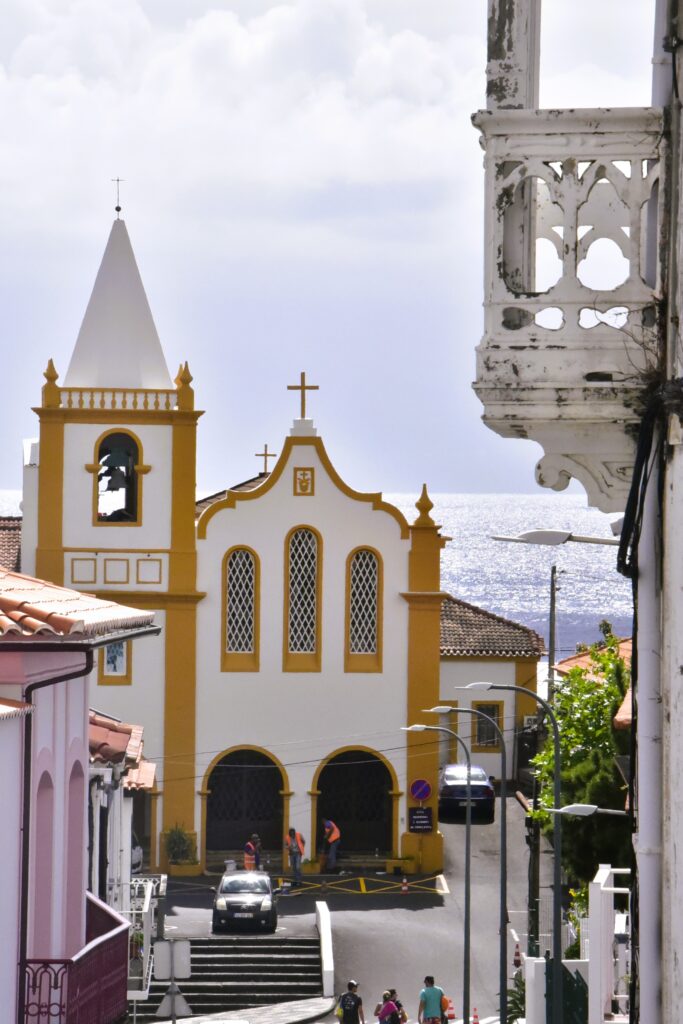
Cliff Top Views
An island formed by a vast volcanic mountain has endless cliff tops with unforgettable views. As you traverse the island, there are pullovers where you can stop to drink in those scenes.
The drive between Velas and Topo is the island’s most scenic road trip. You’ll see the Mount Pico volcano poking through the clouds from the green pastures of São Jorge.
Overlooks
There are more than forty fajãs in São Jorge, with numerous cliff-top spots on high slopes where you can admire breathtaking features. These are some of my favorites.
Fajã Do Norte Overlook is a protected landscape area with a coastline view and wildflowers on the hillside.
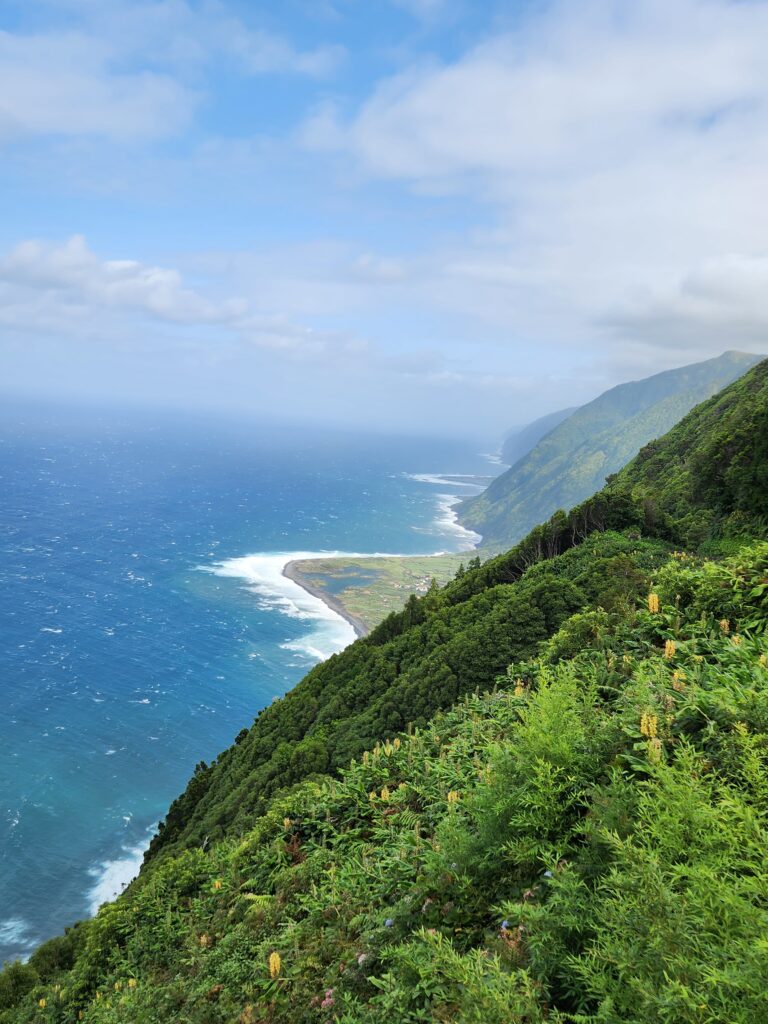
Fajã da Fragueira Overlook has a long-range view of the village of Calheta, a town built along the water atop the faja. The Calheta Parish Church (Igreja Matriz de Calheta/Igreja de Santa Catarina de Alexandria) was built in the 17th century and is easy to pick out in a photograph.
Fajã Grande is located on the coastline in the opposite direction of the Village of Calheta. Several pull-offs afford places to take pictures of the village, and there is an overlook for an overhead shot. The striking Santa Catarina Church in Calheta certainly stands out in pictures.
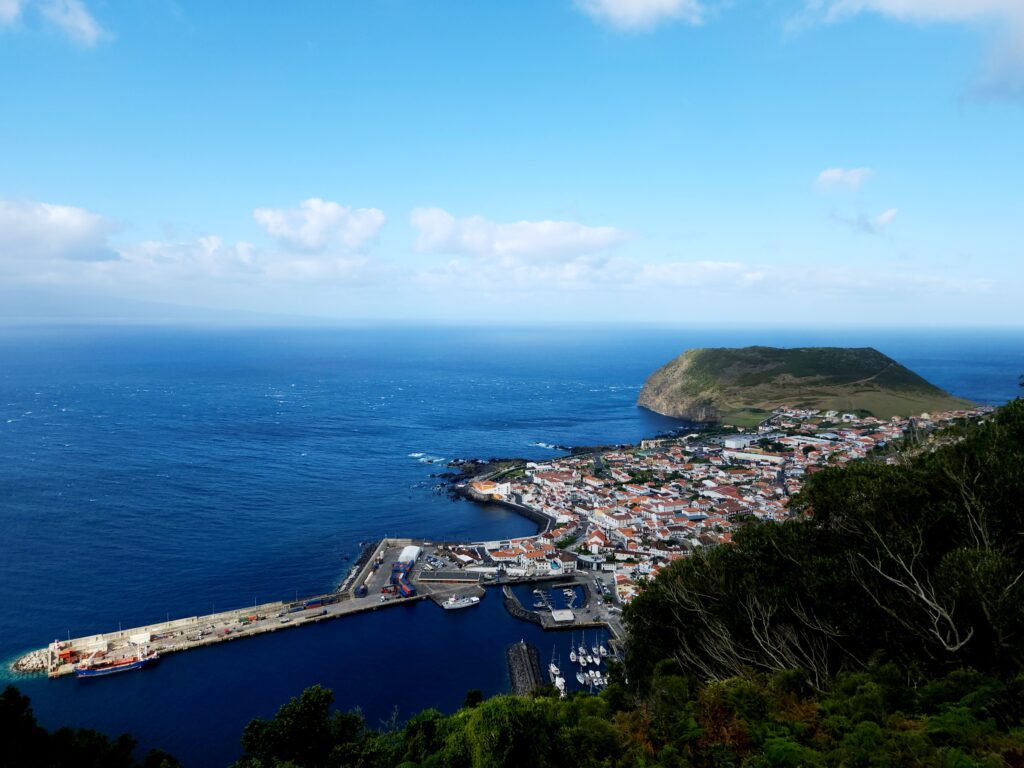
Ribeira do Almeida Overlook provides a stunning view of the charming fishing village of Ribeira do Almeida. Another beautiful spot that overlooks the church is from the Ribeira Seca Road.
Rosais is a civil parish located inside the municipality of Velas, on the island’s western end, out to the point. The Ponta dos Rosais lighthouse is on that point. Rosais is a fertile area, once called the breadbasket of São Jorge. Today, the area is primarily pastureland and the wooded Parque Florestal das Sete Fontes.

How do you get to and around São Jorge?
The least expensive way to island-hop is to take the ferry from island to island. However, it will require extra time, and some ferries don’t run all year, so do your research. The triangle between São Jorge, Faial, and Pico Island is a short distance. You can usually jump on a ferry and make it a day trip.
When you arrive, you can pick up a rental car to get around São Jorge, and there are tours. There are several places in São Jorge for car rental, including one inside the São Jorge Açores Aeroporto. Again, research before you go and have a plan in mind. However, after my experience, I have to say the best way to see the island is with local experts who can develop the perfect travel program for your specific likes and needs.
A local travel guide is intimately acquainted with the unspoiled nature of this small island. Plus, they know the best places to make a quick stop for a travel photographer to get a stunning shot. And they won’t need to rely on Google Maps! LOL!
How many days do you need in São Jorge?
How many days can you manage? *smile* There are so many things to do that you will need at least three days. In addition, the island is about 34 miles long, so you’ll be driving at least 70 miles (on narrow, curvy roads) to make a circuit. All this means that getting around can take much longer than you may anticipate.
Natural Wonders of São Jorge
São Jorge Island has dramatic landscapes and natural parks. Our guide on the island, Bráulio Rodrigues, was a multi-talented man—the owner of Cantinho das Buganvilias Resort, the chef, the guide, and the tour van driver. I didn’t schedule a massage, so he may even be a masseur! *giggle* Bráulio was determined that we would have a taste of everything São Jorge had to offer, so off we went. Since even the Azorean people call this “the nature island,” there was plenty to see.
Sete Fontes Natural Park (Parque Florestal das Sete Fontes)
Sete Fontes Forest Park, at 30 acres, is the largest nature reserve on the island. The park is inside a reservation that covers the northern end of São Jorge Island (more than 750 acres). Parque Florestal das Sete Fontes translates to Forest Park of the Seven Springs, which explains all my pictures of beautiful ferns.
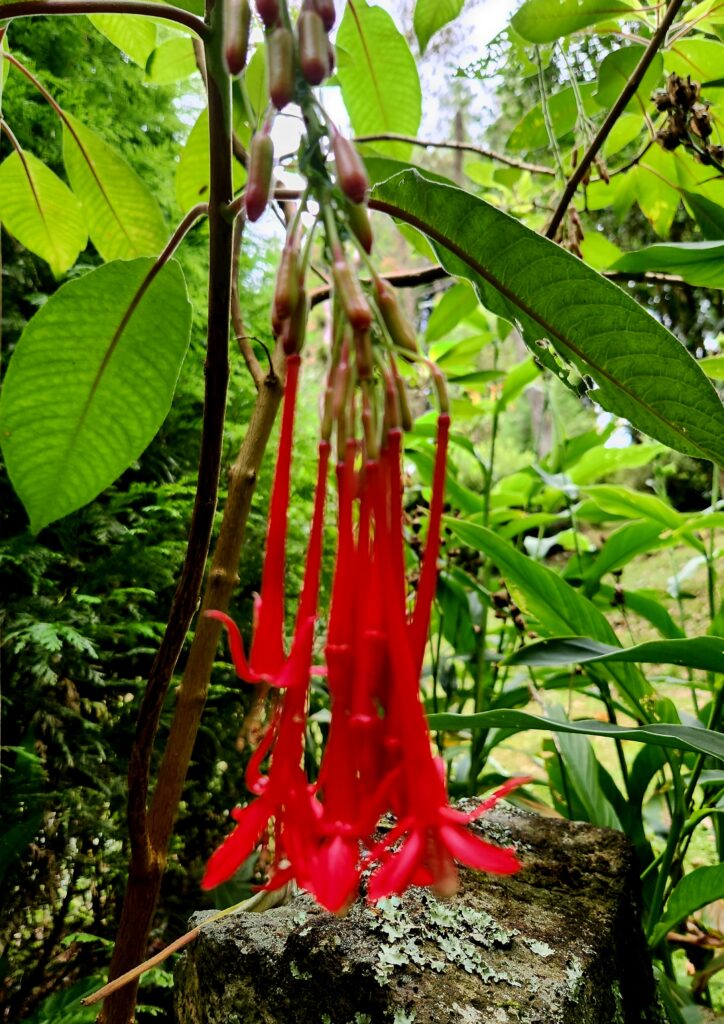
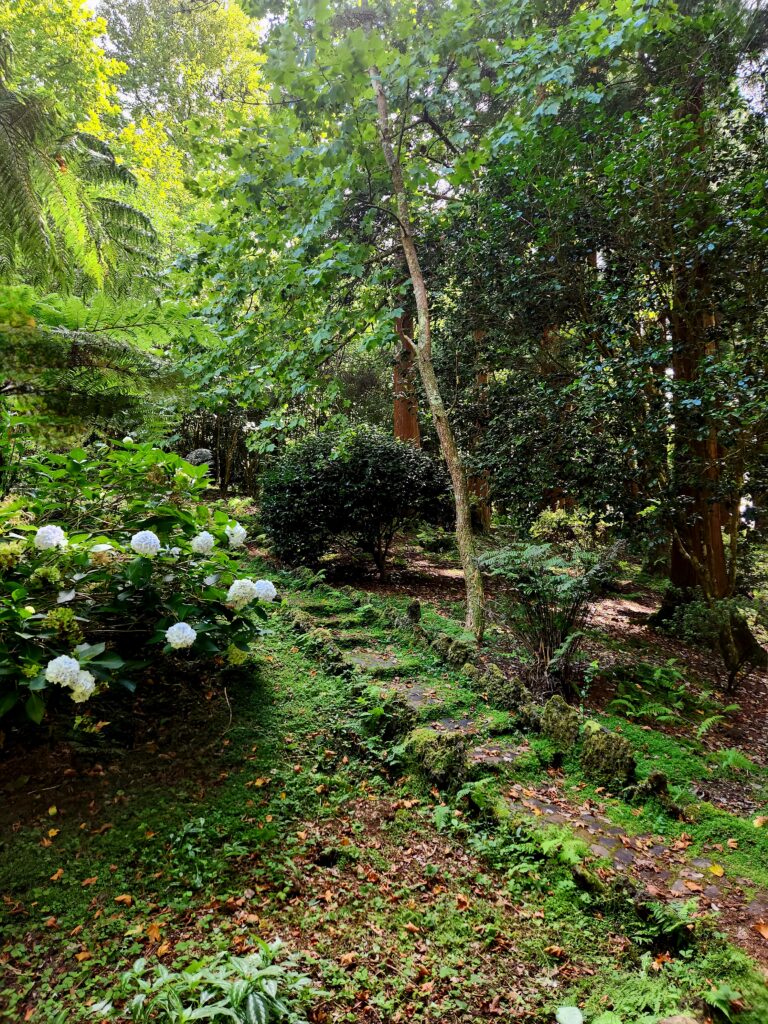
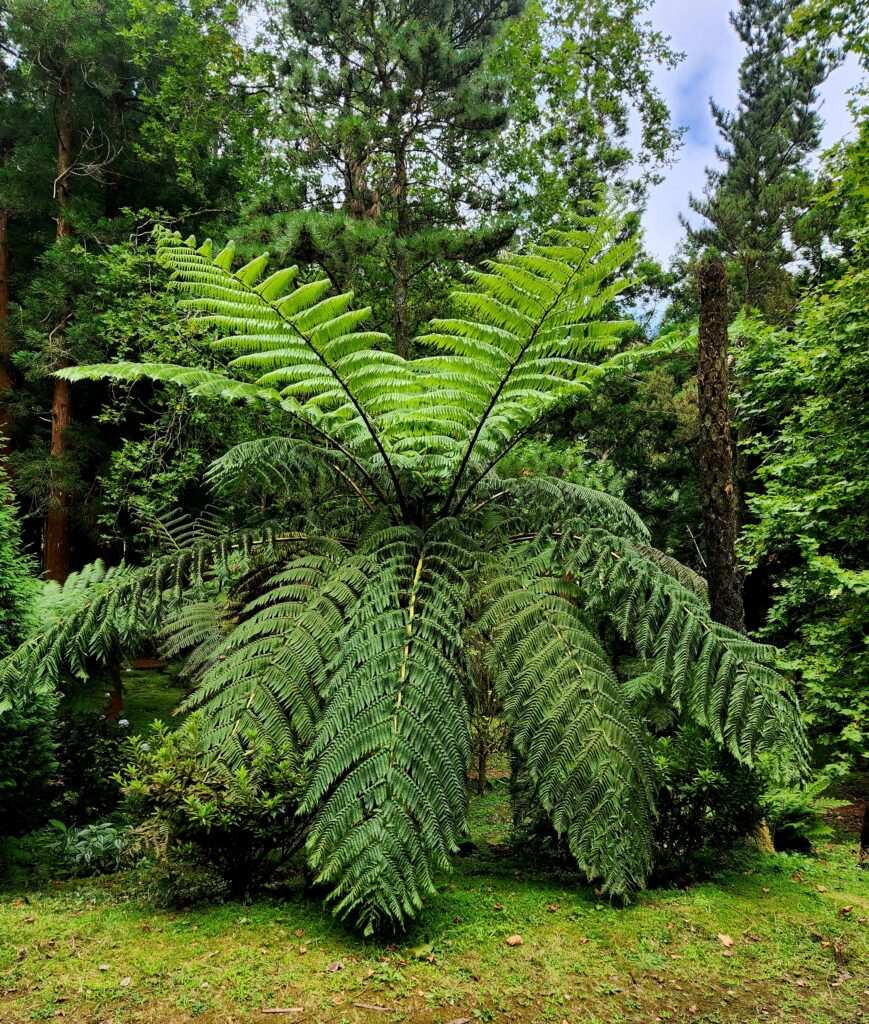
Walking trails curve beside fern-lined streams and ponds in wooded areas as they wind their way to picnic areas and playgrounds. There is a chapel, an old whaler boat, and a small zoo with fallow deer, rabbits, parakeets, and Vietnamese pigs.
Plants grow abundantly in the park. Camellias bloom in late winter, and azaleas provide a riot of springtime colors. Fuchsias combine with heathers and acanthus to color summer days. Trees like pines and Indian beeches fill the dense forest, and the Indian beeches add their lovely blooms to the mix in the spring.
This park was the only place where I spotted a Priolo, but I didn’t get a photo of the shy little finch. The bird is described as the Azores bullfinch, a chubby little bird that was nearly extinct. Since it is the only place the Priolo is found, people also refer to the blue and greyish finch as a São Miguel bullfinch.
Silveira Natural Park (Reserva Florestal de Recreio da Silveira)
In 1989, Silveira Natural Park was classified as a Recreational Forest Reserve. It consists of land and channels that carry water to watermills. The water powers gears that turn dry grinding stones, which grind corn, wheat, oats, and barley into flour. These mills represent an essential part of São Jorge’s heritage.
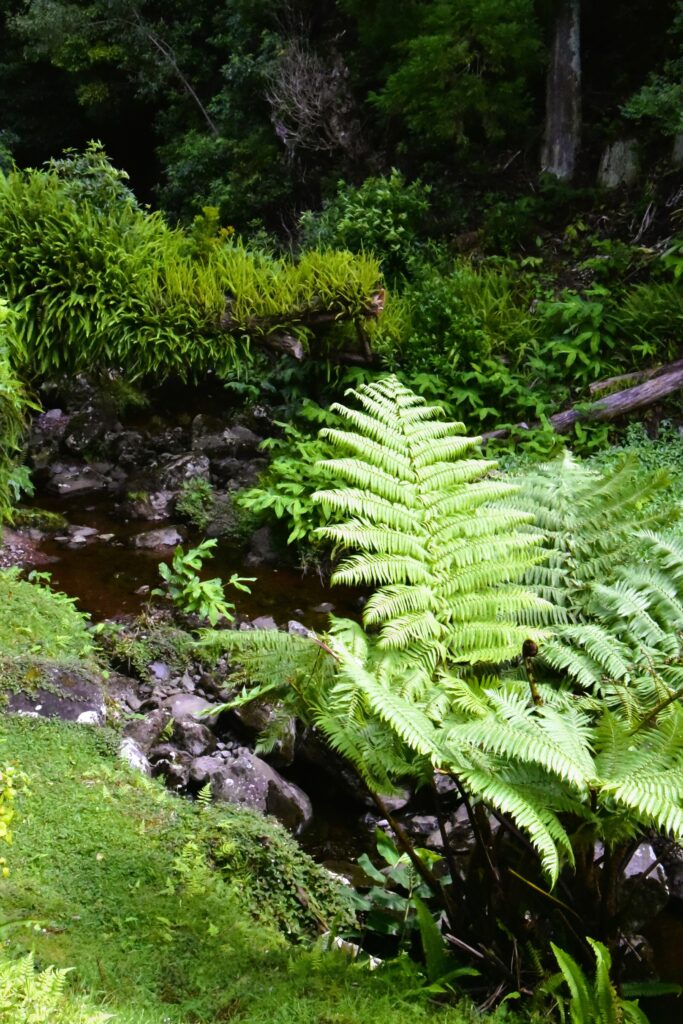
Today, the land is a wildlife refuge. The streams that operated the mills are beautiful, flowing through the park beside paths, picnic areas, and playgrounds. Bridges are located on the footpaths to provide access to park areas. The area has oak, cypress, tulip trees, eucalyptus, pine trees, giant tree ferns, and other ornamental plants. Ox carts once used the path through the park, and an oven house still stands.
Fajã dos Vimes
Fajã is a debris field built up by the collapsing cliffs on the south coast of Ribeira Seca, creating the settlement of Fajã dos Vimes in the Azores archipelago. In 1661, the local municipality ordered every farmer to bring in 20 rabbit pelts, 30 rat pelts, and 30 birds. The farmers were also required to own a dog and a ferret. These municipal requirements were instituted to save wheat crops from nuisance animals.
In 1757, an earthquake (thought to be about a 7.5 on the Richter Scale) destroyed the original settlement and killed most of the people. The quake caused landslides and movement that created several new fajãs. This fajã was one of the places to establish a school in 1886, and in 1993 still had a class of 11 students,
This southern coastal port suffered massive destruction in an 1899 earthquake. Nearly one hundred years later, Hurricane Bonnie’s rainfall destroyed the main bridge to the area. Living on a volcanic island is not for the faint of heart.
Fishing was and still is an integral part of the economy. The warm climate and fertile soil promoted the cultivation of corn, wheat, grapes, potatoes, taro, and beans. Coffee thrived when farmers introduced it in the area.
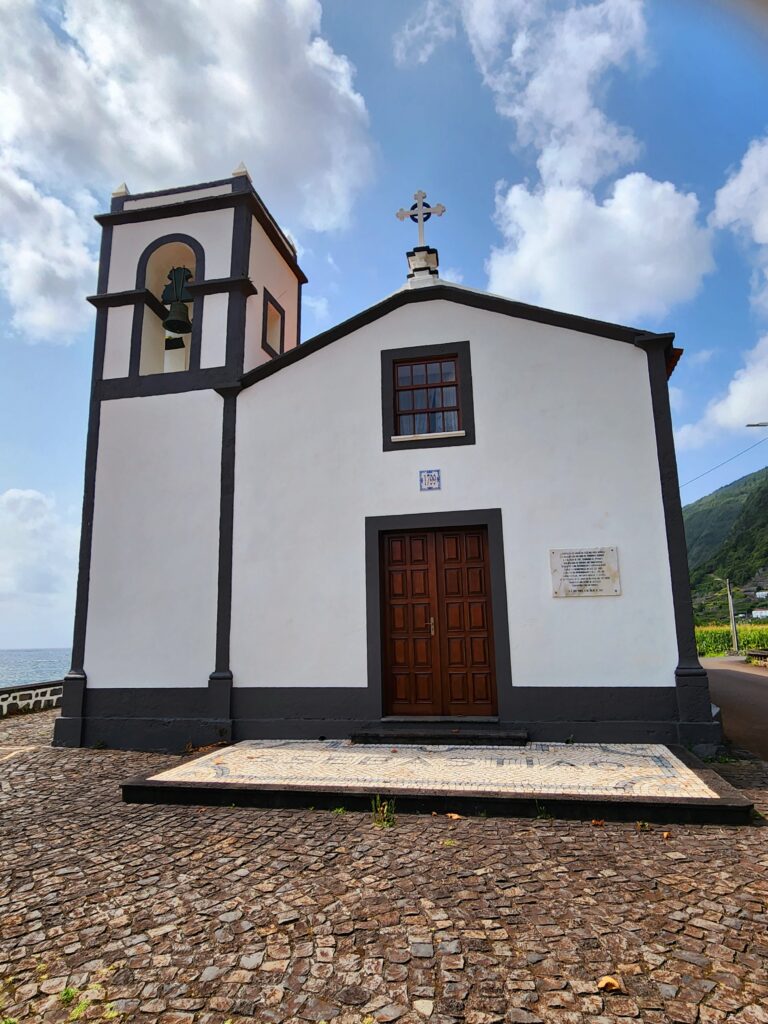
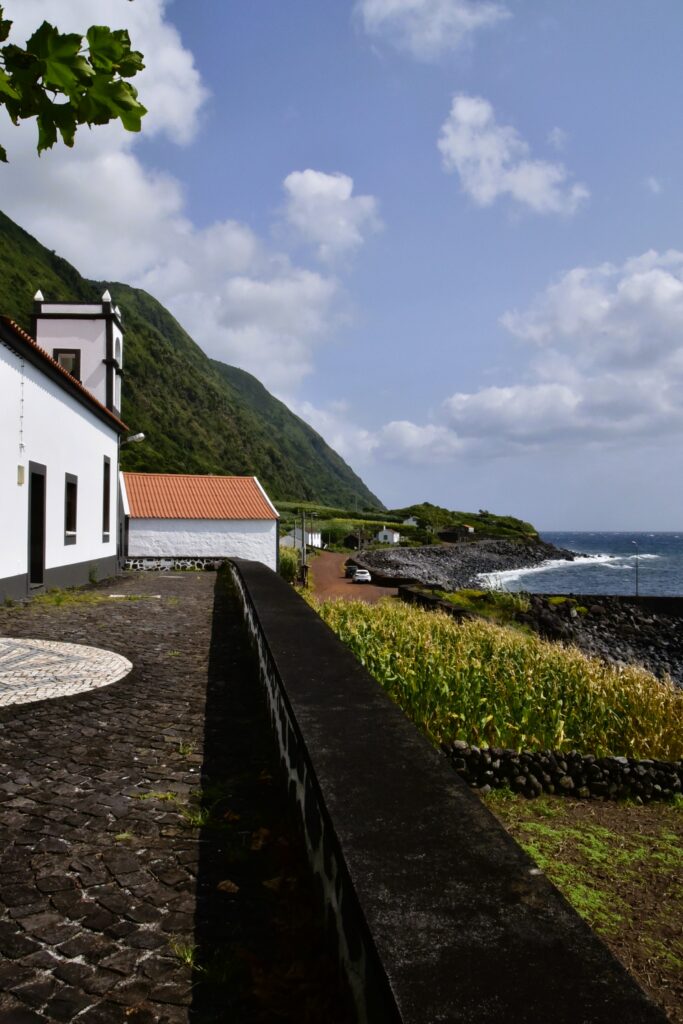
Império do Espírito Santo da Fajã dos Vimes is a church near the coffee plantation. This tiny whitewashed church was established in 1799 and still serves the community.
Fajã dos Vimes is well-known for artisanal textiles woven on ancient wooden manual looms, a technique used here since the sixteenth century. Crafters still create handmade quilts, bedspreads, and carpets using traditional stitching techniques. There is a demonstration of the weaving techniques in the local Café Nunes.
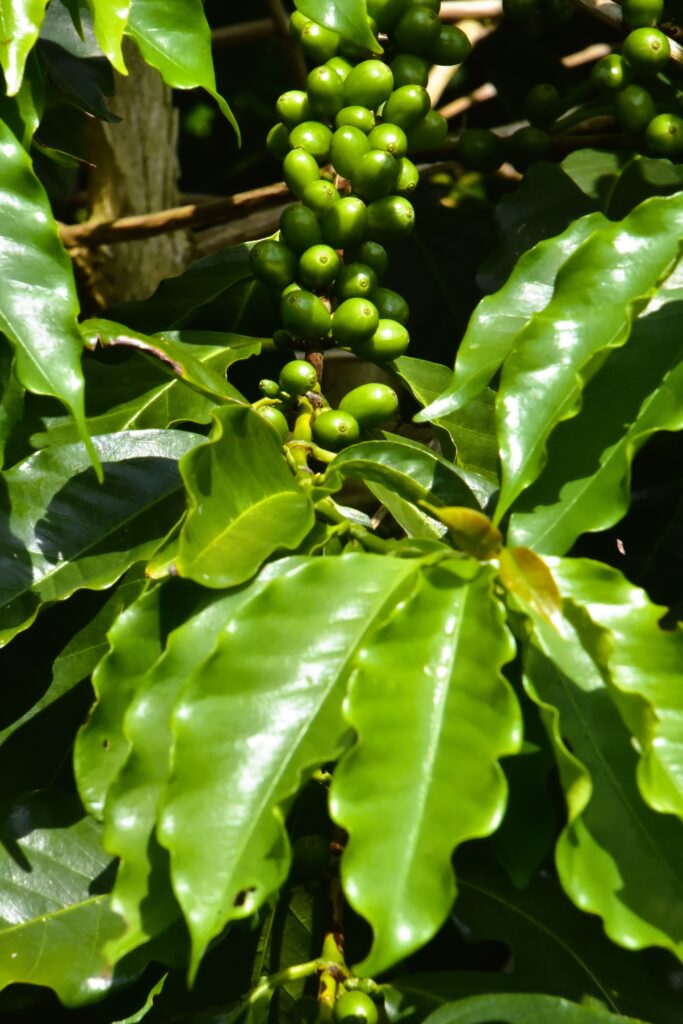
Plantacao de Café – Café da Fajã dos Vimes – Coffee Plantation
The Azores island of Sao Miguel is home to the only tea plantations (two) in Europe. But São Jorge is home to a coffee farm. Café Nunes is in an area with a microclimate that allows coffee plants to thrive—something unheard of in Europe. Owners planted eight hundred coffee plants forty years ago, and those produce enough beans for local consumption and selling to tourists. The owner grows organic coffee beans with a unique texture and a heady aroma.
The café has a coffee shop that sells coffee and tasty treats. The hillside behind the Café has coffee plants that you can see while you listen to the story of how coffee beans are harvested.
The Casa de Artesanato Nunes has a loom room, a small handcrafted textile museum, and a shop upstairs. The weavers are happy to have observers while they work and will explain the processes and happily answer questions.
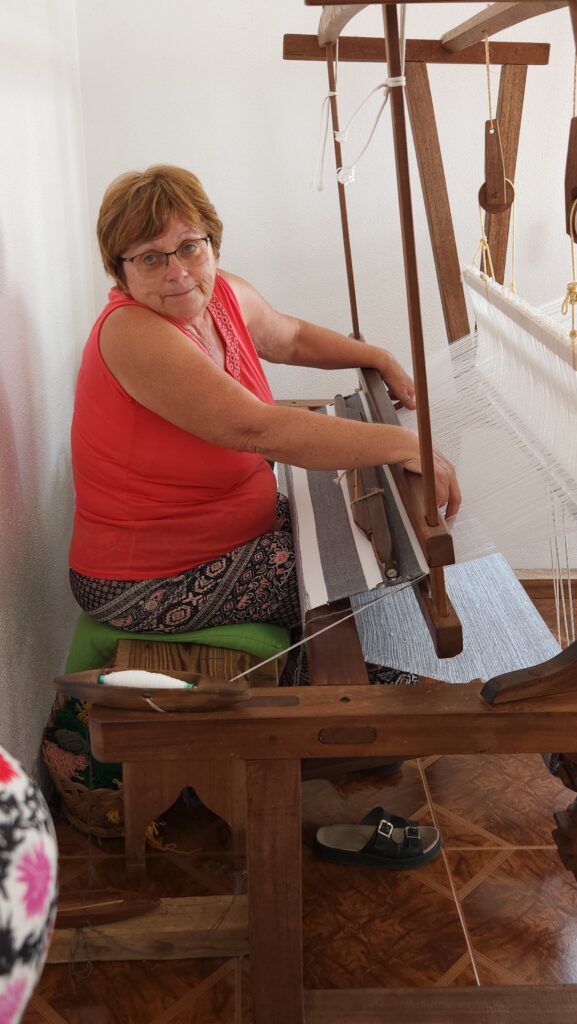
© Jo Clark
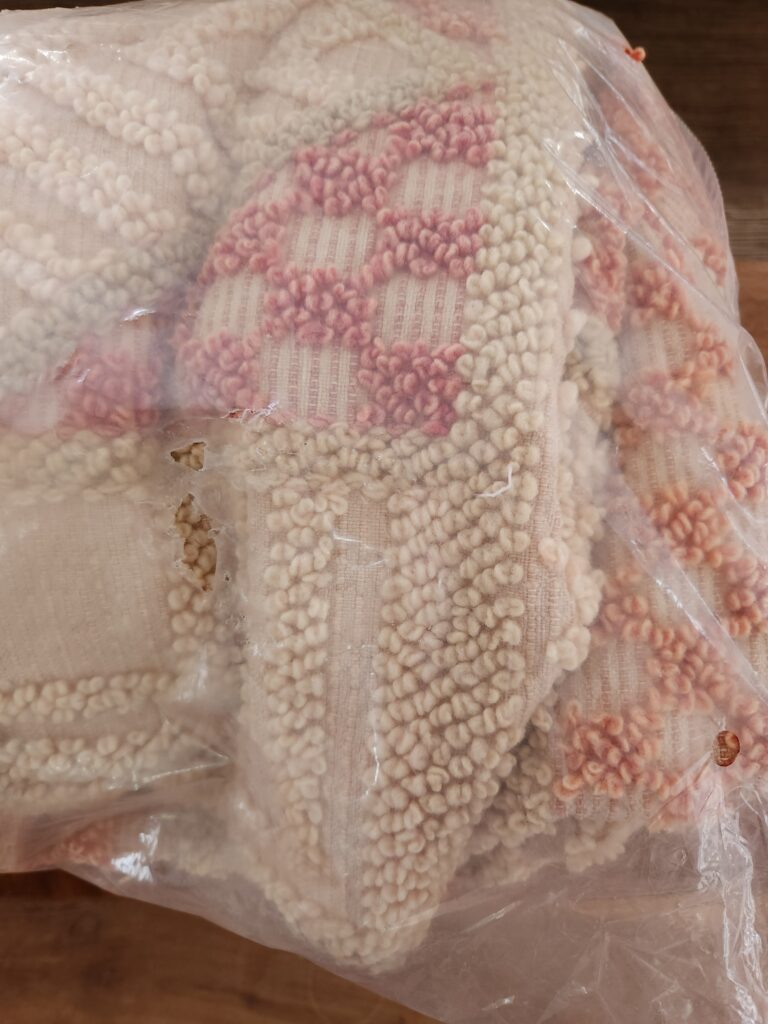
© Jo Clark
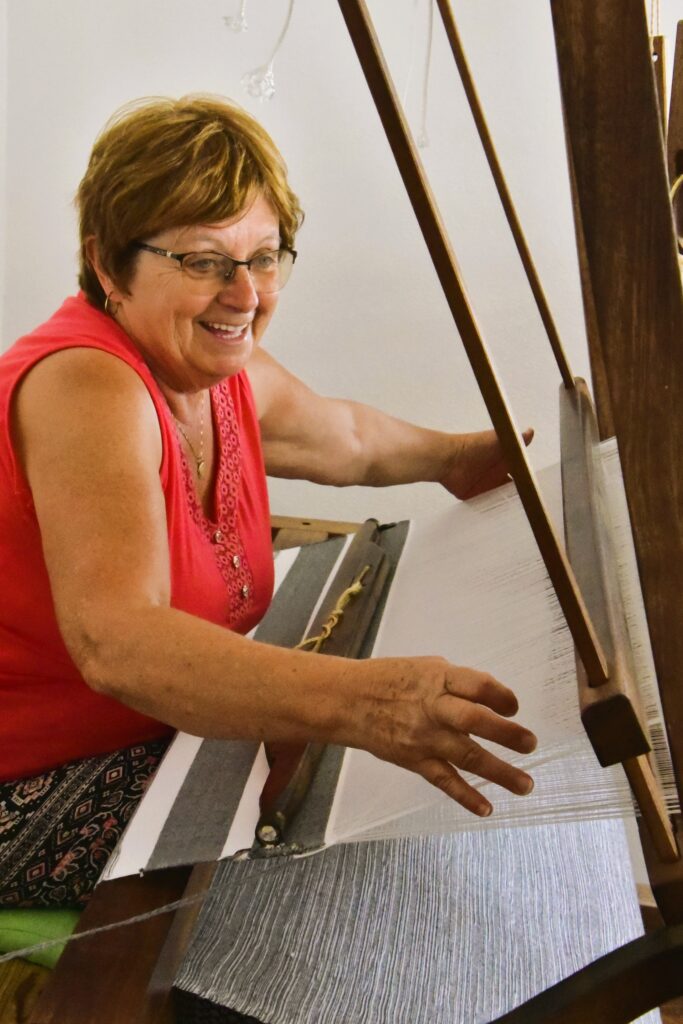
© Jo Clark
Windmills
Windmills have long been on the Azores Islands—since the earliest settlements of the 15th century. Those settlers used wind power to pump water and power millstones to grind wheat. The ancient stone and block housings for windmills still dot the landscape, providing photo ops for photographers. And there are a few modern windmills hard at work on the mountainsides.
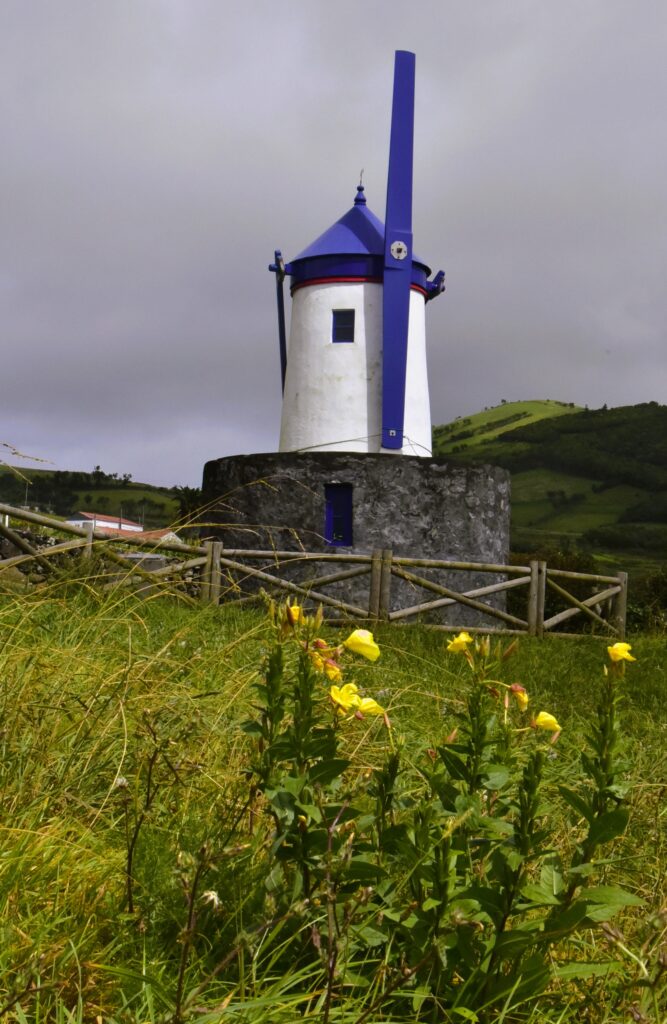
Tertúlia Tauromáquica Jorgense – Bullring on São Jorge
The bullring is a colossal arena, barely fitting into one frame in a photograph. Bullfighting is an integral part of the culture of many countries, like Portugal and Spain, and its heritage surrounds the Azores. Although it is losing popularity, it is still allowed in many countries, including Portugal and the United States, if the fight doesn’t result in the death of the bulls. The bulls are released after events and given at least three weeks’ rest before the next bullfight.

São Jorge’s bullfighting arena is still used a few times yearly, particularly during July bullfighting festivities. Tourada à corda (bullfighting by rope) is one of the archipelago’s most ancient traditions, especially on Terceira. The first record of a bullfight by rope was in 1622 during a celebration of saints, indicating that it was likely already a popular event by that early date.
During this event, four bulls run through designated streets of the town, “controlled” by a long rope held by eight shepherds. We saw videos of this, and honestly, it is almost (but not quite) as crazy as running through the streets while being chased by bulls. Yes, the bull has ropes to “help” control him. Yes, eight men are doing their best to hold onto the bull. And yes, the bulls’ horns are capped with leather or balls to help prevent severe injuries to players. But, yes, those bulls weigh in at over a ton, outweighing the eight-man teams by nearly half a ton.
I want to see the Bullfighting Museum in Porto Santo on my next visit to Terceira. It has a historic collection of photography, posters, bullfighters’ costumes and capes on display, and the heads of famous bulls.
União de Cooperativas Agricolas de Lacticínios de São Jorge – The Cheese Factory
When lush green hillsides cover over 80 percent of an island, it can only mean one thing—cows. Nine thousand cows. And cows give…well…cheese! One of the island’s best-kept secrets is that São Jorge cheese has a mild, buttery taste with just a hint of tanginess. Yum!
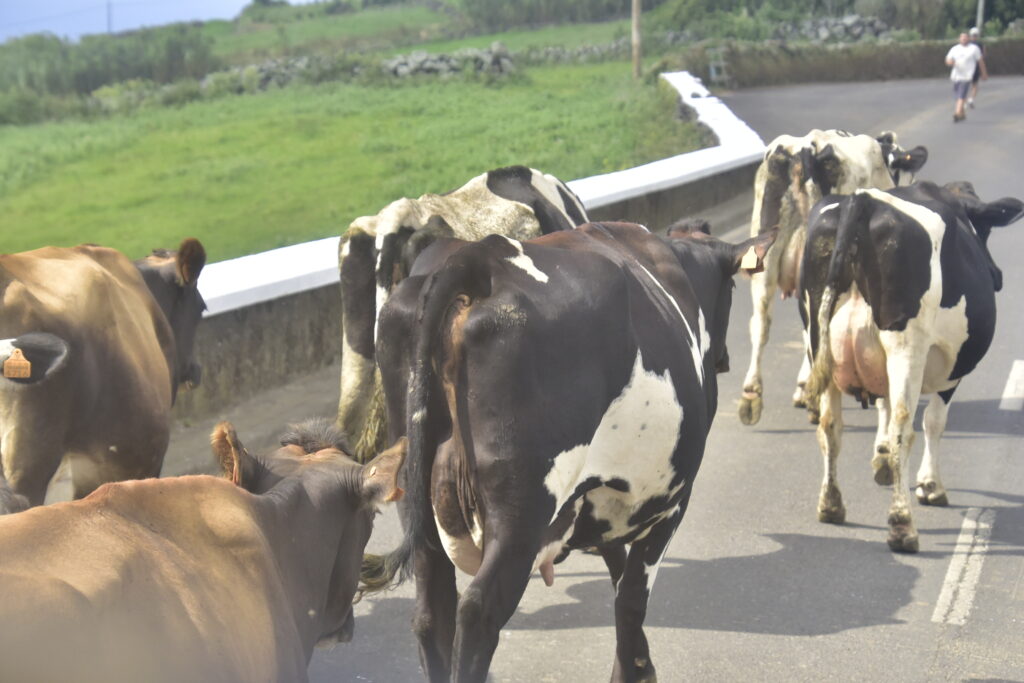
São Jorge Cheese (Queijo São Jorge) is a semi-hard cow’s milk cheese made from unpasteurized milk. Cheeses must be made on the island of São Jorge to receive a PDO (Protected Geographical Status). Only foods of exceptionally high quality and a part of local tradition receive the certificate. São Jorge Cheese has been produced since the 1500s. The local cheese is made using cream and salt (and a little rennet to make it coagulate)—pure, natural São Jorge in one bite.
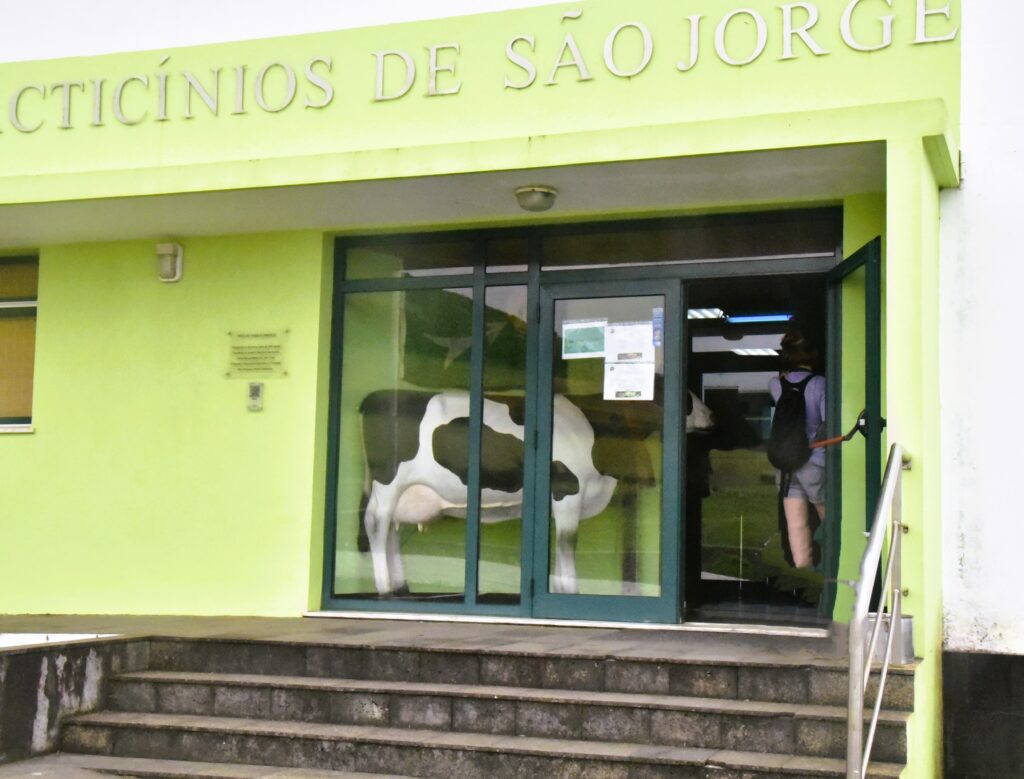
© Jo Clark

The island has three cheese factories, so visit one and take a tour. You’ll have to meet the same hygiene standards as the employees, so be ready to get dolled up. You’ll model a paper lab coat, hairnet, gloves, and booties over your shoes. The last stop on the tour is the cheese tasting. You’ll taste a cheese aged three months (soft and slightly salty) and one aged for seven months (firmer and sharper). The shop is open for your cheese-buying needs and stocks other local products.
I know what you’re thinking—did Jo milk a cow for this cheese (like she milked a donkey on Terceira for a glass of milk)? No. No, I didn’t meet the cows in a milking parlor. But I did see plenty of them in pastures and even going down the road. They had the right-of-way!

Where to Eat
The local restaurants are numerous if you have any room after all that cheese. A Google search revealed twenty places to eat, but I needed to include two spots where I enjoyed meals. So, as good as research is, keep your eyes open for unexpected spots. An article about all the meals I ate during my seven days in the amazing Azores will be published soon. Meanwhile, to make you drool, let me tell you about a few of the best restaurants that over-fed me.
Os Amigos is a café restaurant in Calheta. They serve traditional Azorean cuisine on the waterfront in Ponta de São Lourenco. Many dishes are grilled, and most are local products and kinds of seafood. From our appetizer of fresh bread with São Jorge cheese to the Passion Fruit Sweetness (I promise, it really is called that) and the seafood in between, chefs put local goods to use.
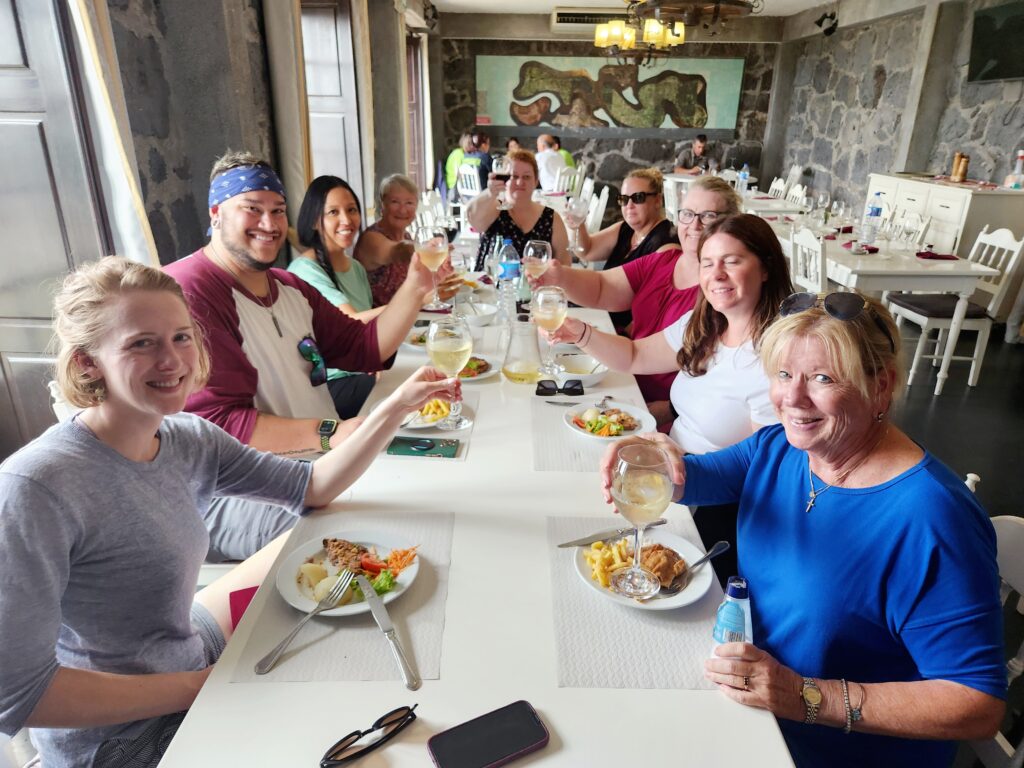
A Quinta Restaurante and Residencial has one guest room above the restaurant. A Quinta is close to the airport, and the village is within walking distance. They served a delicious Dona Amelia pastry, Terceira Island’s traditional tea cake named for a Queen. Of course, they shared the recipe. *smile*

Cantinho das Buganvilias Resort and Restaurant is a one-stop shop, with rooms, efficiency apartments, a restaurant, a bar, and Chef Bráulio in charge. I spent time in the kitchen where two women were helping him, and the three turned out fantastic food. There was a delicious grilled octopus, baked tuna, and sides galore, and we took small servings of two desserts—because who can pick just one? Plus, one of our group was celebrating her birthday. We were already eyeing that chocolate masterpiece, measuring our remaining room against the size of the desserts on the table.
Oh, and did I mention the Portuguese wines we drank? Wine with each meal was a requirement (right?) The wines that we drank did not disappoint. There will be more about those sips in the food article, so stay tuned.
Where to Stay
If you Google the term “Sao Jorge Azores hotels,” you will pull up 101 results. But you only need to know about one. *grin* You’ll love staying at the secluded São Jorge resort of Cantinho das Buganvilias Resort. Located in Queimada (also called Carregadouro), the Buganvilias Resort is the length of two football fields from the Atlantic. The Resort is sandwiched between the remains of old windmills. Although the Resort feels secluded, it is convenient to the São Jorge airport.
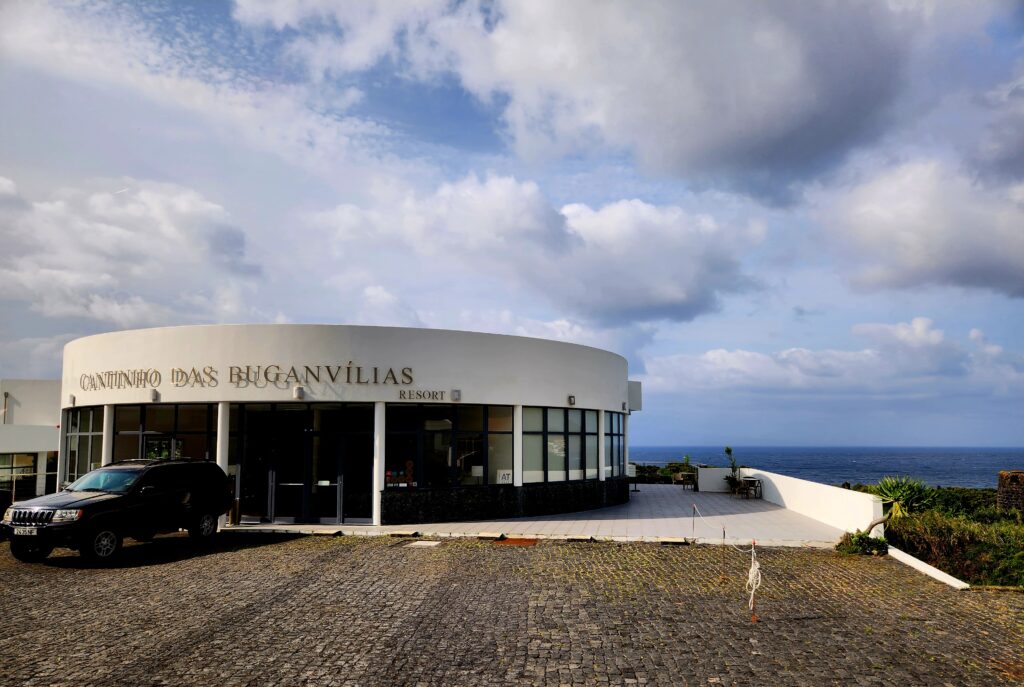
You can enjoy the breakfast buffet while enjoying spectacular views of Faial and Pico Island. Go ahead. Fill your glass and spend a day on the deck or by the pool, surrounded by that fantastic Azorean beauty.
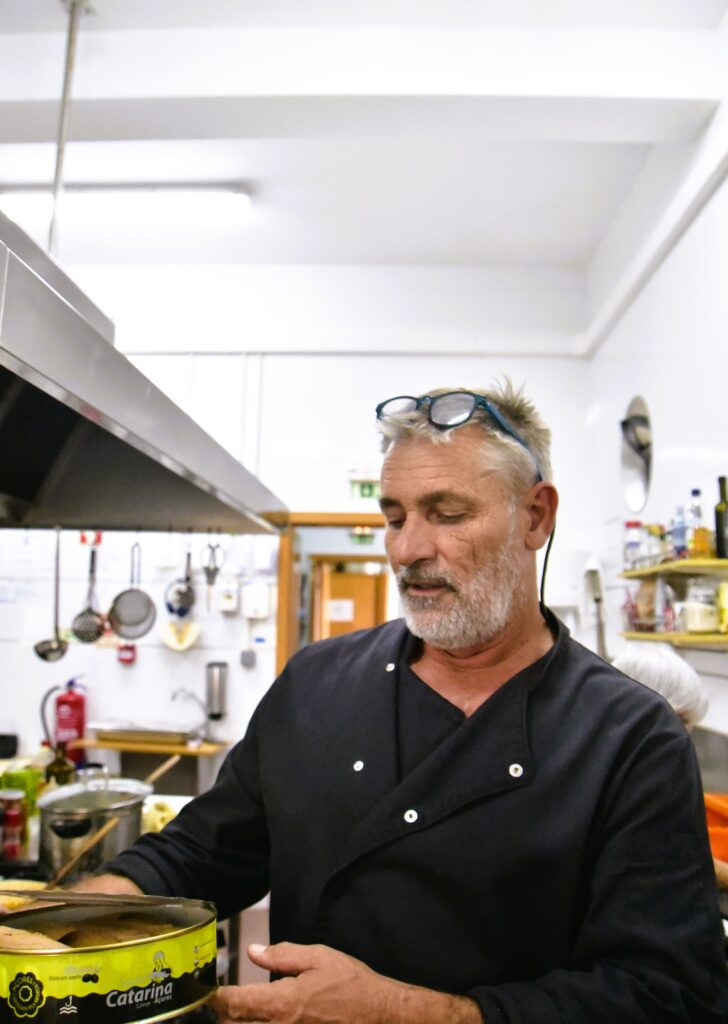
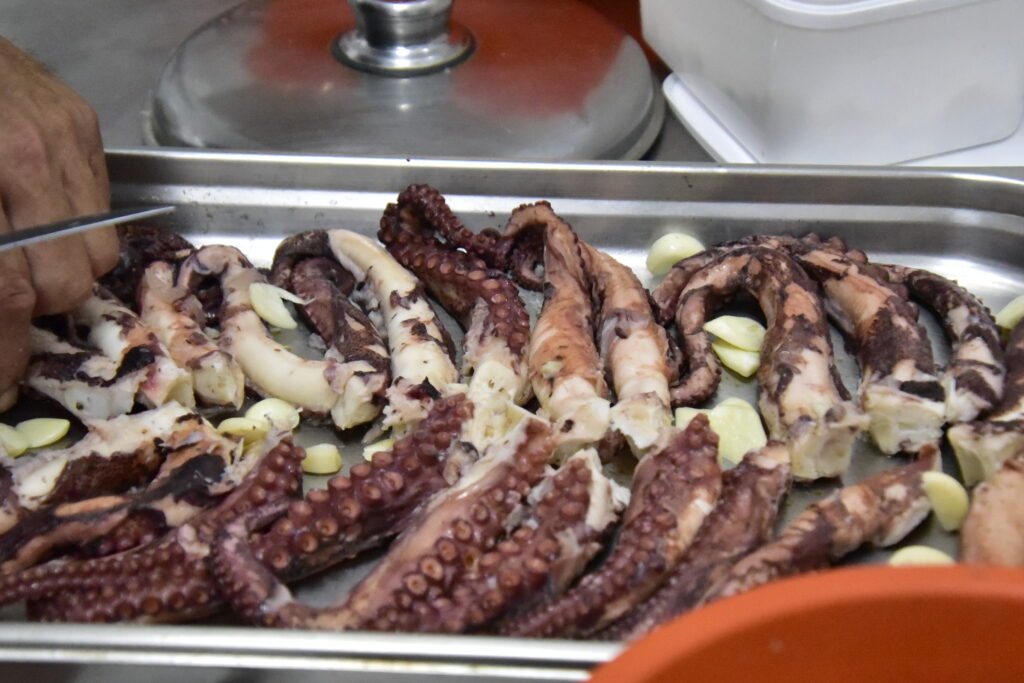
© Jo Clark

The Resort provides guests access to various activities and tours to enjoy the island’s and ocean’s beauty and nature. From massages to sport fishing, Max at Buganvilias’ front desk can schedule whatever will make your visit perfect and unforgettable. The Bougainvillea Resort puts any modern hotel on notice. A month or two on these beautiful islands might be just the prescription for surviving next winter.
Peaceful and beautiful, your time here will not be long enough. A couple of days sounds like a lot when you arrive, but that time seems gone in an instant. And, like me, you’ll be left wishing for more.
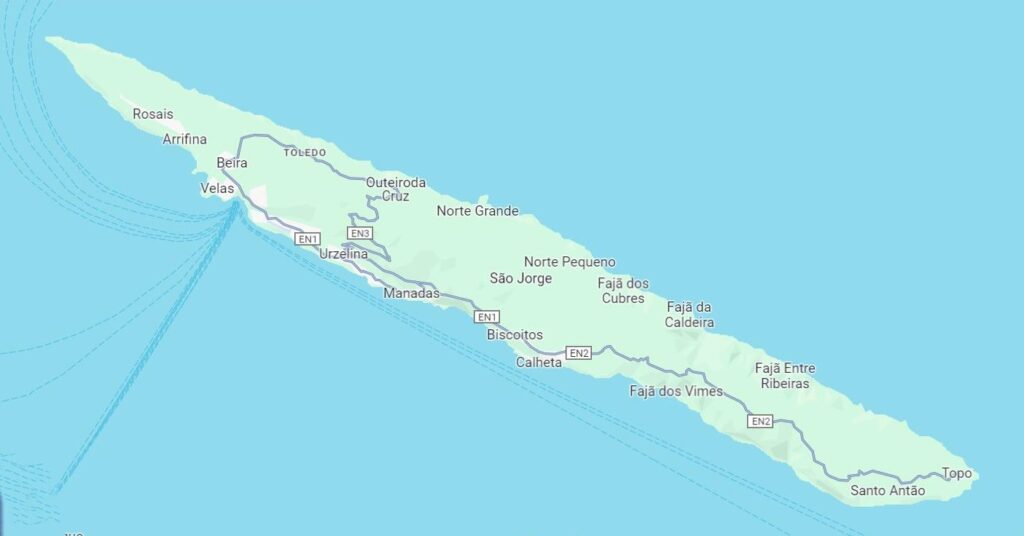
What is the best month to visit the Azores
The high season to go to the Azores is July and August. If you want to avoid the crowds, avoid those summer months. However, the best São Jorge weather is between June and September, so you must consider that. As far as temperatures go, it is pleasant year-round, but the rainy season is from October to April.
Is it worth going to Terceira?
The Island of Terceira offers visitors even more natural outdoor beauty. Unique island highlights include a volcanic cave with some of the world’s largest stalactites, a donkey milk farm, and a field filled with steaming vents from a volcano.
Please read about my trip to Terceira and the natural parks and beauty of both Terceira and São Jorge. For assistance planning your trip to the Azores, contact Explore Azores Islands.
Plan Your Next Trip!
For more exciting vacations, try these locations! Plan a trip to South Carolina’s Georgetown, a visit to New York City, or take off on a road trip to visit beautiful Yadkin Valley Wineries. You know, it’s never too early to start planning your next trip!

The article is so inclusive. The photos are amazing. Each and every photo makes you want to plan the trip immediately.
Thank you! Sao Jorge is so beautiful it is impossible to take a bad photo!
Cheese, wine, and chocolate cake! That plus all the beauty of nature certainly does make Sao Jorge seem practically perfect.
I just want to know if the folks in Faja dos Vimes are STILL required to own a ferret!!!
Sao Jorge is practically perfect. But I’m not sure about the requirement to own a ferret! LOL! I suppose I’ll have to go back to find out!
Awesome article! I’m in Portugal now exploring the mainland and will be exploring the Azores Islands next month! I will definitely check out your suggestions.
Thank you, Erika! I know you’ll have fun! There is another article on my page too, so be sure to read that. And there is also my podcast on the natural parks in the Azores:
https://shows.acast.com/jo-goes-everywhere along with an accompanying article here:
https://nationalparktraveling.com/listing/experience-natural-beauty-on-the-amazing-azores-islands/